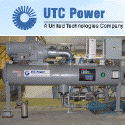Archive for the 'Geothermal' Category
Interesting funding model
One of our Partners brought this to my attention this morning and I thought it was worthy of a mention. Polaris Geothermal has completed it’s first round of equity financing recently using what looks to be a “spec company” approach – they seem to have a different approach in Canada to getting this done. See the press release here for details. Polaris is developing a 66MW geothermal power generation project near Leon, Nicaragua.
Technorati Tags: Renewable | Energy | Geothermal
More Geysers development
Back in October, Western GeoPower (TSX: WGP) announced their intent to rebuild a power plant on the site of old “PG&E Unit 15” commencing operations in 2009. This is interesting in that there was a plant on that site producing 65MW from 1979-89. By resizing the plant to 25MW (net,) Western GeoPower believes that they’ll get 50 years of operation from the site producing some 200,000 MWh per year.
Technorati Tags: Energy | Geothermal | Electricity
Organic Rankine Cycle
The Organic Rankine Cycle (ORC) is a fancy name for a binary system taking heat from a source and transferring it to a working liquid in a closed system to be vaporized and pressurized, typically turn a turbine, then condense back to liquid form before flowing through the heat exchanger again to repeat the cycle. The diagram below breaks out the typical components of an ORC system.

These systems can vary in size from a few hundred kilowatts clear up to hundreds of megawatts. A picture of a 200Kw system is displayed below.

These ORC systems have several key benefits over traditional steam turbines including lower operating temperature (down to 75C,) less wear and tear on turbines (clean single fluid environment,) and no requirement to expose heat source to the environment (no emission power generation is possible using these units in a closed geothermal system for instance.) The major disadvantage to this approach is that energy is lost during the heat transfer process relative to direct use systems.
Technorati Tags: Energy | Science | Geothermal
Seismic activity at The Geysers
One of the tidbits picked up on our recent trip to The Geysers was about the seismic activity around the resource. Since it is a geothermal resource, one of the things an exploration team looks for is seismic activity as it is a primary indicator of resource.
It was a surprise to me (but really shouldn’t have been) that the seismic activity in the region has increased both in frequency of activity and magnitude since the field has been in production. Logically, one would expect that if you’re taking huge amounts of mass from underground that there would be some impact, at the very least, subsidence. This isn’t to say there are huge cataclysmic quakes happening, the quakes tend to be small and frequent.
Click the map to visit the USGS for more detail.

As you can see from the USGS quake map above, there are 52 quakes in the past week, the cluster of events near the left, top of the map is in The Geysers region. The magnitude of these quakes range from 1-3 typically, though a 4.4 was registered in the Calpine leasehold in the past few years. Curiously, the activity has increased with the injection measures taken to replace mass extracted from the production wells. Since the reservoir is a series of fractures in a confined space, this may be from overloading certain areas of the reservoir rather than a more even distribution of the injected fluid across the fissures.
Nevertheless, a very interesting side effect of the geothermal activity in The Geysers region.
Technorati Tags: Energy | Geothermal | Earthquake
Field Trip to the Geysers
Yesterday, two colleagues and I had the chance to visit a geothermal plant at The Geysers in Lake County, California. For those of you not familiar with the area, it’s near Middletown on Highway 29 about 32km (20m) north of Calistoga. There is a very narrow valley between two ~1,000m (~3,000′) elevation ridgelines. On the west ridgeline about 8km (5m) north-northwest of Middletown is an old mining road that winds up onto the ridge. Along the way, one sees well after well all connected by large insulated pipelines headed to one of the 21 active power plants scattered across the landscape.
The major operators on the field now are Calpine (19 plants,) Northern California Power Association (2 plants,) and US Renewables is reworking the Bottle Rock plant due to come online in 2007. Another decomissioned 65MW plant is rumored to be part of a repower project at lower output (~25MW.)
The geothermal resource at The Geysers is relatively rare, it’s dry steam that is produced from the wells (vs. a standard hot fluid that either “flashes” to steam or is used for heat transfer to a working unit in a binary system.) The area being utilized is approximately 11km (7m) long and 8km (5m) wide in the rough shape of a football located some 2,000m (6500′) below the surface. The reservoir rock is a graywacke, a type of sand stone with fractures that capture water and transfer heat from a suspected magma dome below. There are other layers of rock acting as a capstone (trapping the steam in the reservoir) such that it can only escape to the surface through faults and wells.
The resource has been known for some time and has been exploited in some way for more than 40 years, specifically with a large buildout of power plants in the 1980’s. The peak output for the field was 2,100MW during the late 1980’s the output of steam declined some 17-20% per year thereafter to a current production level of around 750MW. Over production aided in the precipitous decline which was largely stemmed by taking the measure of injecting treated wastewater from nearby communities back into the reservoir. The facility we visited yesterday produces some 132MW (120MW net minus the parasitic load of the plant) from 70 production wells and 5 injection wells. While the decline of steam yield continues, it has slowed considerably and is predicted to reach an equilibrium in the next few years with the injection program replacing the mass extracted on a daily basis.
I believe (aside from overproduction) that the major culprit in decline of steam production is due to the condensation of post-turbine steam which is cooled through cooling towers where 70% of the water is lost to evaporation. A closed system would preserve much more of the mass and enable a more effective injection regime (not to mention the opportunity to boost production by using the cooling steam to power binary systems down to 90C.) One other side effect of the steam emission is the requirement to cleanse the steam of sulphur, mercury, and vanadium before it is released into the atmosphere which adds more cost and negative impact from this power generation method.
The physical aspects of the plant we visited were impressive. There were two enormous steam turbines (the “spare” blade waiting nearby weighed 25,000kg – or 27 tons and when functioning spins at 3,600 rpm.) Each turbine was connected to a generator sending electricity to a substation and then onto the grid through a 230kva line in the area. Each generator had a separate gigantic stainless steel condenser box, separator for non-condensable gases (about 0.2% of the steam,) and cooling tower infrastructure. There is a separate Stretford process aspect to the plant that separates the sulphur, mercury, and vanadium from the gas for atmospheric emission. One thing that struck us was the overall cleanliness of the entire operation. I’ve been to coal fired power plants before and they are absolutely filthy despite the efforts by the maintenance staff to keep them clean. These plants are relatively small and very clean by comparison.
We’re grateful to have had the opportunity to visit one of the oldest and largest geothermal power production areas on the planet. We had a great host in a friendly plant manager who had worked out at the site since the late 1970’s and was very knowledgeable and helpful in answering our many queries. We learned a ton and it will be helpful as we embark upon our mission to acquire and operate a renewable energy portfolio. I’m certainly hopeful that another opportunity for a visit will arise.
Technorati Tags: Energy | Geothermal | Electricity








